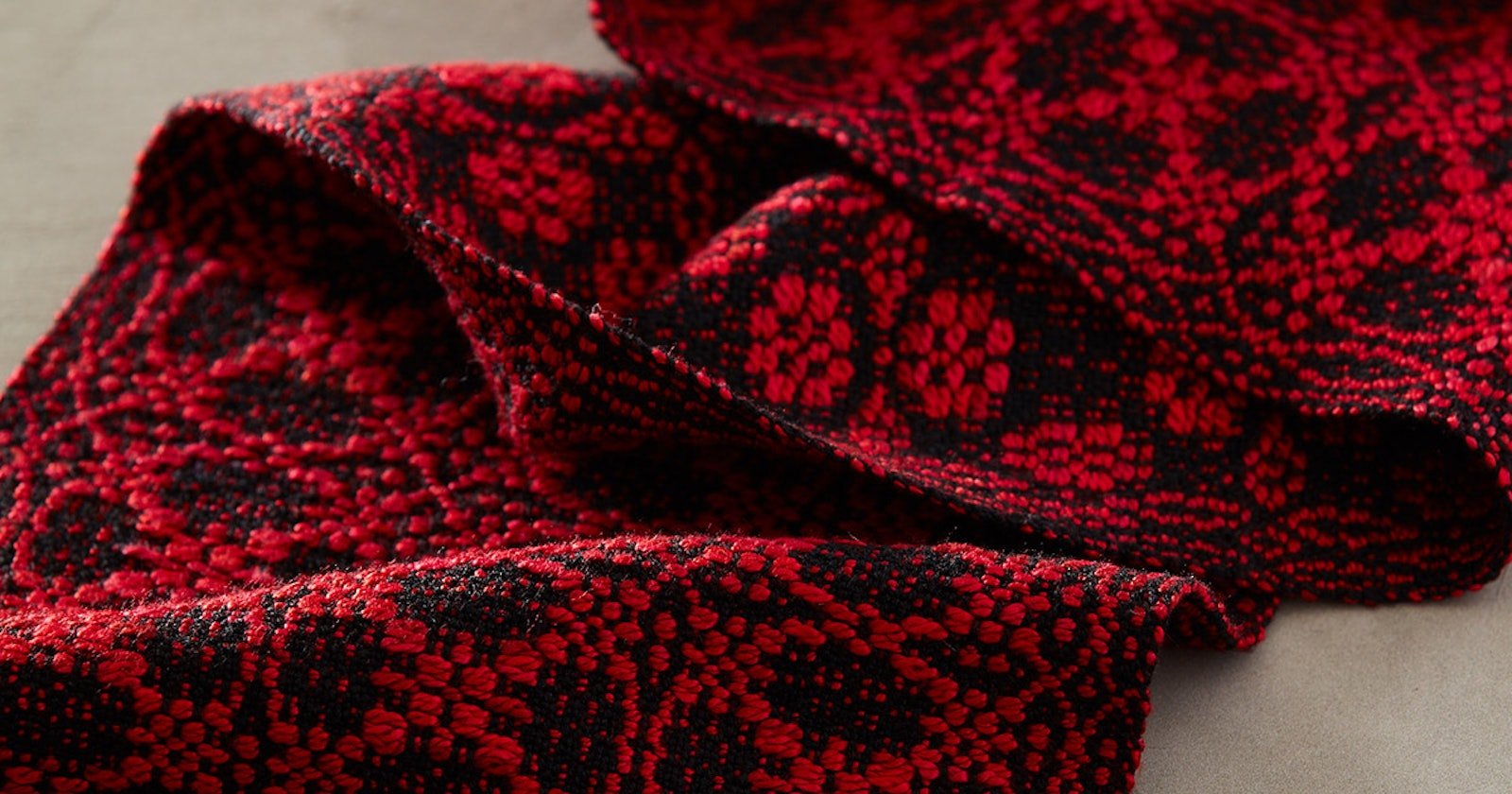Lots of people think that overshot must be a complicated 8-shafts-and-above weave structure, but that is far from true. Most overshot designs can be woven on 4-shafts, and once you get into a weaving rhythm of pattern-tabby-pattern-tabby, weaving goes smoothly as the beautiful patterns emerge on your loom. That said, designing and weaving overshot requires a bit more concentration than plain weave.
Here are five tips from designer Pattie Graver, author of Next Steps in Weaving, to ensure great overshot results. The first three are probably ones you’ve already heard about weaving other structures, but the last two are about looking at overshot designs and color choices in a mindful way.
1. To help “beat to square,”
I follow the advice of Helene Bress in The Weaving Book: “Identify a diagonal line that appears in the cloth as you weave and try to keep that at 45 degrees.” I keep a protractor by my loom!
2. Advance the warp often, but not too far.
Keeping the slant of the beater close to 90 degrees (plus or minus) allows me to maintain a more even beat.
3. Sample, sample, sample.
Consider putting on at least an extra yard of warp in order to get a feel for the draft. This will allow you to test for proper beat, colors, and other “what-ifs.” I often put on a 6-yard warp and use at least half of the warp for sampling.
4. As you explore other designs, spend a little time studying the treadling of your overshot draft.
You may wish to choose a different starting/stopping point than the one specified. As you study the drawdowns, you will discover that some drafts have small sections that can be woven separately from the overall design.
A small portion of the overall pattern makes a nice border on this Primrose Table Runner designed by Norma Smayda and woven by Ann Rudman, Handwoven November/December 2017. Photo by George Boe.
5. Consider the values of your colors.
If warp and pattern weft are too close in value, the overshot designs will not appear in strong contrast. Remember, too, that the eye follows light, so bits of lighter pattern weft add interest to the cloth.
Debbi Rutherford used name drafting to create this overshot pattern and then used a variegated yarn for her pattern weft. Handwoven January/February 2017. Photo by Joe Coca.
Overshot has been and always will be a favorite weave structure. Great patterning on 4-shafts is hard to “beat.”
Happy Weaving!
Andrea Lotz and Susan E. Horton
Posted November 11, 2016. Updated February 1, 2019.



